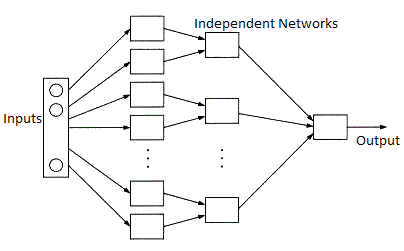
These inputs are.Backpropagation is a common method for training a neural network. The Artificial Neural Network receives the input signal from the external source in the form of a pattern and image in the form of a vector. The concept of the artificial neural network was inspired by human biology and the way. , is a computational learning system that uses a network of functions to understand and translate a data input of one form into a desired output, usually in another form. An artificial neural network learning algorithm, or neural network, or just neural net.

Artificial Neural Network Algorithm How To Correctly Map
To do this we’ll feed those inputs forward though the network.We figure out the total net input to each hidden layer neuron, squash the total net input using an activation function (here we use the logistic function), then repeat the process with the output layer neurons.Some sources use (alpha) to represent the learning rate, others use (eta), and others even use (epsilon).We can repeat this process to get the new weights , , and :We perform the actual updates in the neural network after we have the new weights leading into the hidden layer neurons (ie, we use the original weights, not the updated weights, when we continue the backpropagation algorithm below). The Forward PassTo begin, lets see what the neural network currently predicts given the weights and biases above and inputs of 0.05 and 0.10. Additionally, the hidden and output neurons will include a bias.In order to have some numbers to work with, here are the initial weights, the biases, and training inputs/outputs:The goal of backpropagation is to optimize the weights so that the neural network can learn how to correctly map arbitrary inputs to outputs.For the rest of this tutorial we’re going to work with a single training set: given inputs 0.05 and 0.10, we want the neural network to output 0.01 and 0.99. OverviewFor this tutorial, we’re going to use a neural network with two inputs, two hidden neurons, two output neurons. I really enjoyed the book and will have a full review up soon. Additional ResourcesIf you find this tutorial useful and want to continue learning about neural networks, machine learning, and deep learning, I highly recommend checking out Adrian Rosebrock’s new book, Deep Learning for Computer Vision with Python.
Big picture, here’s what we need to figure out:We’re going to use a similar process as we did for the output layer, but slightly different to account for the fact that the output of each hidden layer neuron contributes to the output (and therefore error) of multiple output neurons.


 0 kommentar(er)
0 kommentar(er)
